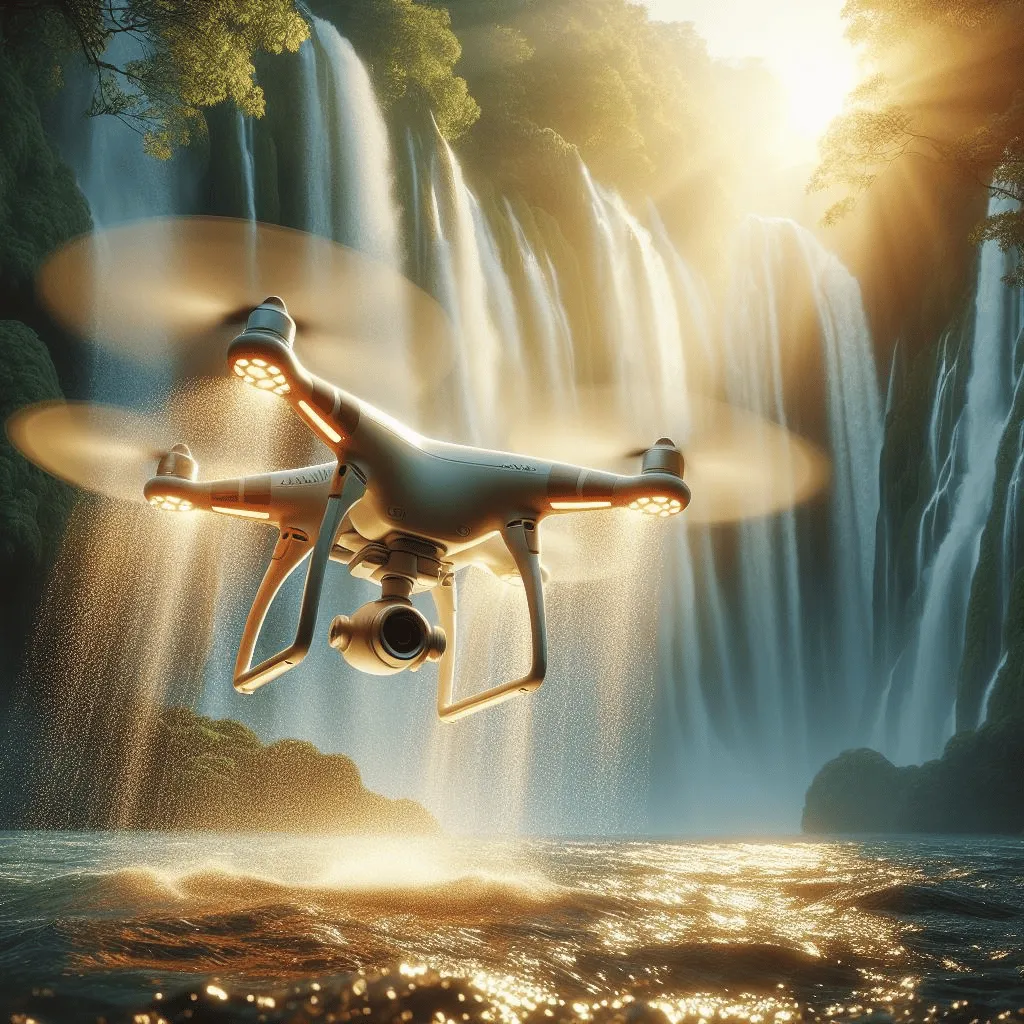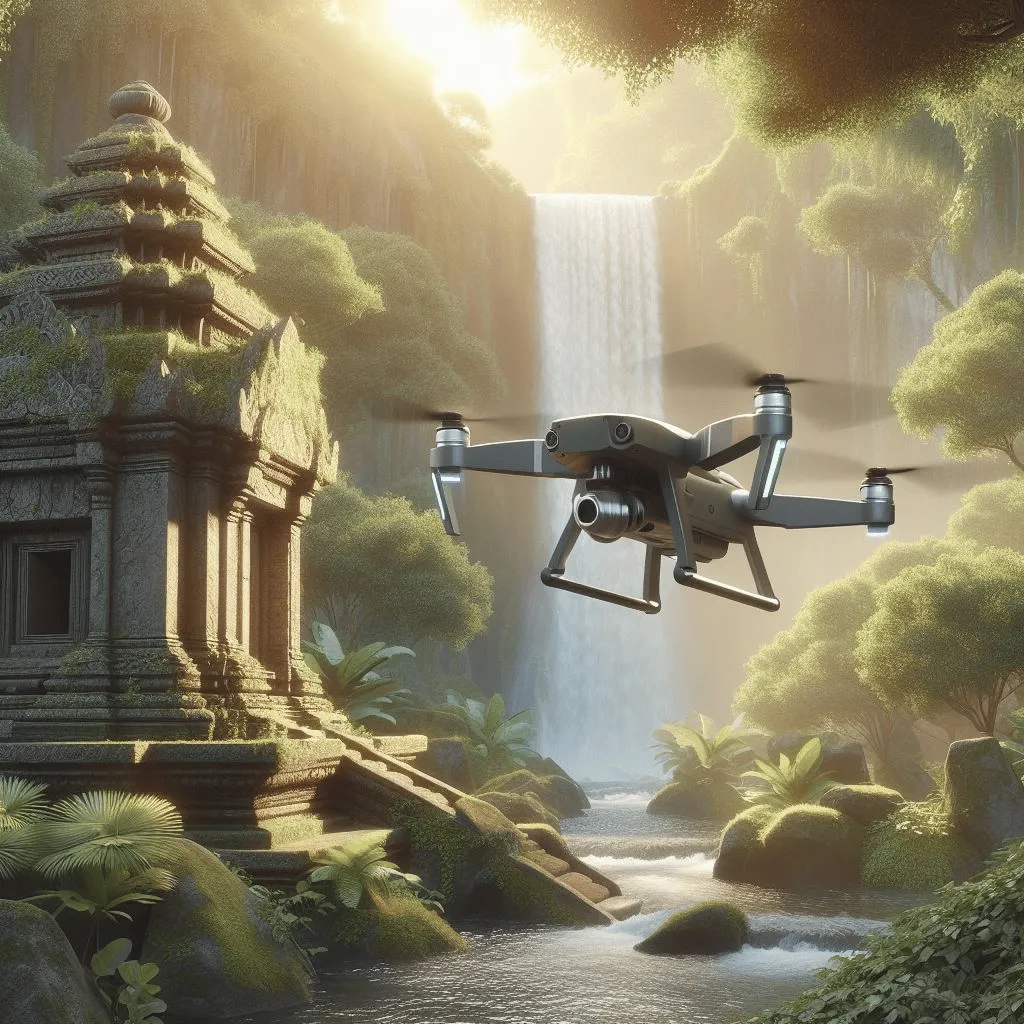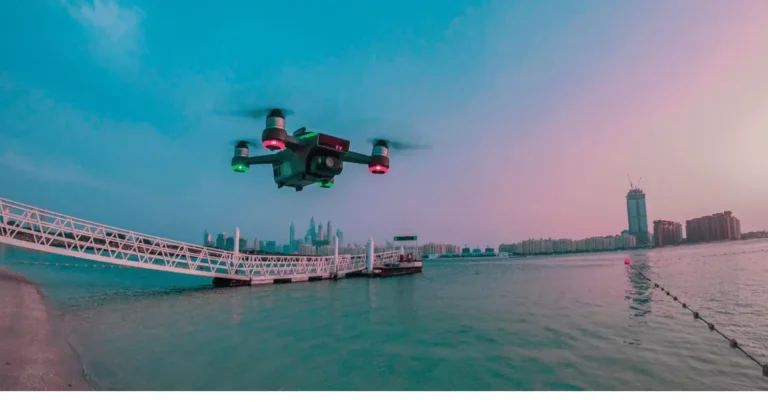Can Drone Propellers Hurt You? (How to Be Safe?)

Drone technology has taken the world by storm, soaring to new heights with its ability to capture breathtaking aerial footage and deliver packages faster than a speeding bullet.
But amidst all the excitement, there’s one burning question on everyone’s mind: Can drone propellers actually hurt you?
What is the material of drone propellers and how fast do they spin?
When it comes to drone propellers, the material they’re made of plays a crucial role. Let’s take a look at some common options:
Plastic: Often the go-to choice due to its affordability and lightweight nature. However, plastic propellers can be a bit delicate and prone to breaking during crashes.
Nylon: Striking a balance between affordability and durability, nylon propellers are a tad more flexible, absorbing impact better. Yet, they might be a bit less efficient.
Carbon Fiber: If you’re aiming for peak performance, carbon fiber propellers are the way to go. They’re super strong and light, but they do come at a higher price and can be a bit brittle.
Wood: Found in some high-end drones, wood propellers bring a unique mix of strength, flexibility, and sound absorption. Just be mindful of moisture and warping.
Now, let’s talk speed. The velocity of drone propellers varies based on drone size, type, and flight mode:
Remember, propeller speed isn’t the sole factor influencing drone performance. The propeller’s size, pitch, and the power of the motor all play roles in determining how efficiently the drone can fly and generate thrust.
So, when it comes to choosing the right propellers, it’s all about finding that sweet spot that aligns with your drone’s needs.

Read More: Can a Drone Hurt You? (How to Keep Yourself Safe?)
Can drone propellers hurt you?
Yes, drone propellers can pose a real danger! Picture this: sharp edges spinning at high speeds, ranging from 2,000 to 7,000 rotations per minute (RPM), depending on the drone’s size and type.
That’s no joke! These blades can cut through skin, causing anything from minor cuts to severe lacerations and, in extreme cases, even amputations.
Let’s break down the potential harm:
Minor cuts and scrapes: The common mishap when you accidentally cross paths with the propellers during takeoff or landing.
Deep lacerations: Direct contact with the propellers at full speed can lead to serious cuts, requiring immediate medical attention.
Eye injuries: Picture this – a propeller hitting your face and causing serious eye injuries, maybe even blindness.
Head and neck injuries: The danger zone due to vital organs and blood vessels. Even a minor collision can lead to serious internal bleeding.
The severity of injuries depends on a few factors:

Read More: When to Replace Drone Propellers? A Comprehensive Guide
Can drone propellers hurt so many people?
Fortunately, large-scale injuries from drone propellers are not very common. While the potential for harm is certainly there, several factors contribute to keeping the actual number of incidents relatively low:
However, it’s important to acknowledge that drone-related injuries do occur, and while not widespread, they can have serious consequences. Here are some specific examples:
Some Examples
Overall, while the risk of widespread injuries from drone propellers is low, it’s crucial to remain vigilant and prioritize safety when operating or being around drones.
By following safety guidelines, raising awareness, and implementing responsible drone practices, we can help to minimize the potential for harm and ensure the safe and enjoyable use of this technology.

Read More: Can You Fly DJI Mini 2 Indoors? (Drone Laws For Mini 2 in 2024)
How drone propellers can hurt you?
Drone propellers may appear harmless, but their design poses potential dangers. Crafted from materials like plastic, nylon, or carbon fiber, these blades feature thin, razor-sharp edges intended to efficiently cut through the air.
When in motion, drone propellers can spin at high speeds, ranging from 2,000 to 7,000 rotations per minute (RPM), depending on the drone’s size and type.
The combination of sharp edges and high speeds makes even brief contact with a spinning propeller risky, leading to various injuries.
The most common injuries are minor cuts and scrapes, often occurring when accidentally brushing against propellers during takeoff or landing.
More severe injuries, such as deep lacerations, can result from direct contact with spinning propellers, requiring immediate medical attention.
Serious eye injuries, including blindness, can occur if propellers strike the face. Head and neck injuries are particularly perilous due to the vital organs and blood vessels in these areas, with even minor collisions causing serious internal bleeding.
The severity of injuries depends on factors like the drone’s size and power. Larger and more powerful drones with faster-spinning propellers can cause more serious harm.

Additionally, the material of the propellers plays a role—plastic propellers are more likely to break on impact, while sharper carbon fiber propellers can cause deeper cuts.
The location of impact also matters, as injuries to sensitive areas like the face, neck, and eyes are more likely to be severe. Stay cautious around spinning drone propellers to avoid these potential dangers.
Read More: How to Fly a Drone? Essential Tips
How to keep yourself safe from drone propellers hurting you?
Drone propellers, with their sharp edges and high speeds, can be quite dangerous if not handled with caution. To stay safe and prevent propeller-related injuries, here’s a guide to follow:
Maintain Distance: Keep at least 5 meters (16 feet) away from a flying drone. This distance significantly lowers the risk of accidental contact, minimizing the chance of injuries.
Keep Your Body Away: Never attempt to touch or reach for a drone in flight. Propellers operate at full speed during take-off and landing, making these phases especially hazardous.
Avoid placing your hands, fingers, or face near the propellers, even when the drone is on the ground.
Be Aware of Your Surroundings: Always be mindful of your surroundings when a drone is in operation.
Watch out for children, pets, or bystanders who might unintentionally enter the drone’s flight path. Choose an open area without obstacles like trees or buildings to prevent collisions.
Utilize Safety Features: Some drones come with propeller guards, offering an additional physical barrier between the blades and potential contact points.
Consider using these for added protection. Drones equipped with obstacle avoidance systems can also help minimize the risk of collisions.

Follow Responsible Drone Practices: Before flying, familiarize yourself with the drone’s controls and operation manual. Understanding how the drone works is crucial for safe piloting.
Fly only in designated areas with permission to avoid legal issues and safety risks. Never operate a drone under the influence of alcohol or drugs, as impaired judgment can lead to accidents.
Some other my tips
Additional Tips: Wear appropriate clothing and accessories, avoiding loose items that could get caught in the propellers.
Supervise children and pets when drones are in operation. Report any reckless or unsafe drone operation to relevant authorities.
By adhering to these safety guidelines and practicing responsible drone use, you can ensure everyone’s safety and fully enjoy the benefits of drone technology.
Remember, taking preventive measures is crucial when dealing with the potential dangers of spinning propellers.
Can DJI drone propellers hurt you?
Absolutely, DJI drone propellers pose a real risk of causing harm, just like any other drone’s propellers.
They share common traits that make them potentially dangerous, such as having razor-sharp edges crafted from materials like plastic, nylon, or carbon fiber. These materials are chosen for their ability to efficiently cut through the air.
Moreover, the speed at which DJI drone propellers spin is noteworthy. Depending on the model and size, they can reach speeds ranging from 2,000 to 7,000 rotations per minute (RPM).
This combination of sharpness and speed means even brief contact with a spinning DJI propeller can result in various injuries.
Injuries can range from minor cuts and scrapes, often occurring during takeoff or landing, to more severe issues like deep lacerations requiring immediate medical attention.
The danger extends to eye injuries, potentially causing blindness, and head or neck injuries, which are particularly risky due to the vital organs in those areas.

The severity of the injury depends on factors like the size and power of the DJI drone, the material of the propellers, and the location of the impact. Larger, more powerful drones with faster-spinning propellers are more likely to cause serious harm.
Simple precautions
To stay safe around DJI drones, consider these simple precautions:
By following these simple guidelines, you contribute to preventing injuries from DJI drone propellers and promoting safety for everyone around these captivating flying devices.
It’s crucial to treat all drone propellers with caution, irrespective of the brand, as they all have the potential to cause harm if not handled responsibly. Stay safe and enjoy the marvel of drone technology responsibly!
What are the different types of things that can get cut by touching the drone propellers?
Drone propellers, with their sharp edges and high speeds, can be hazardous to anything they come into contact with. Here’s a breakdown of different things that may encounter issues when touching drone propellers:
Human Body:
Skin: Drone propellers commonly result in cuts and scrapes even with brief contact. Direct hits, especially on sensitive areas like fingers, face, and neck, can lead to deeper lacerations.
Eyes: Propellers pose a serious threat to eyes, potentially causing blindness if they strike directly.
Hair: Long hair can get tangled in spinning propellers, leading to scalp injuries.
Animals:
Fur and skin: Animals, especially pets like dogs and cats, can suffer cuts and lacerations similar to humans. Birds are particularly vulnerable due to their fragile bodies and wings.
Feathers: Propeller strikes can damage or sever feathers, affecting birds’ flight capabilities.
Objects:
Clothing: Loose clothing like scarves or long sleeves can get caught in propellers, potentially pulling the person closer to the blades.
Electronics: Drones themselves can be damaged by their own propellers if they crash or lose control. Phone screens, cameras, and other electronics are no match for the sharp blades.
Trees and Plants: Leaves and branches can be shredded by propellers, potentially causing damage to the drone or even causing it to crash.

Other Materials:
Food: Propellers can easily slice through fruits, vegetables, and other food items.
Paper and Plastic: These materials offer little resistance to spinning blades, getting shredded instantly.
Remember, the severity of the damage depends on various factors like the size and speed of the drone, the material of the object, and the nature of the contact.
Always maintain a safe distance from drones and their propellers to avoid any harm to yourself, others, and surrounding objects.
What can be the worst scenario if you touch the drone propellers?
The worst scenario from touching drone propellers depends on several factors, but let’s explore some potentially serious outcomes:
Severe bodily injuries:
Long-term consequences:
Additional dangers:
It’s important to remember that these are worst-case scenarios, and the vast majority of incidents involving drone propellers result in minor cuts and scrapes.
However, it’s crucial to understand the potential risks and take necessary precautions to avoid any unnecessary harm.
Can small toy drones or basic drones’ propellers injure you?
That’s a good question, and the answer is: it depends. It depends on how fast the propellers are spinning, how close they are to your skin, and how sharp they are.
Some toy drones have very low-powered motors and plastic propellers that are unlikely to cause any serious harm, unless you deliberately stick your finger into them.
Other drones have more powerful motors and metal propellers that can cut through flesh and bone if they hit you at full speed.
The best way to avoid getting injured by a drone propeller is to follow some basic safety rules. First, always fly your drone in an open area away from people, animals, and obstacles.
Second, never fly your drone near your face or other sensitive parts of your body. Third, wear protective gear such as goggles, gloves, and long sleeves when flying or handling your drone.
Fourth, turn off your drone and remove the battery when not in use. And fifth, if you see a drone flying towards you, duck or run away as fast as you can.
Remember, drones are fun and useful devices, but they can also be dangerous weapons if used irresponsibly. So be smart and stay safe when flying your drone.

Final Thoughts – Can Drone Propellers Hurt You?
Drone propellers may seem like small, whirring blades, but they pack a significant punch. Their sharp edges and high speeds can cause a range of injuries, from minor cuts to life-threatening situations.
While the potential for harm may seem scary, it’s important to remember that responsible drone use and awareness of safety guidelines can significantly mitigate the risks. Here are some key takeaways from our conversation:
Ultimately, drone propellers should be treated with respect. By maintaining awareness, implementing safety measures, and prioritizing responsible use, we can ensure everyone enjoys the wonders of drone technology without incurring any unwanted consequences. Let’s keep the skies safe and the fun soaring!
FAQs
Yes, most drones generate noticeable noise due to their spinning propellers. The volume varies depending on the drone size and motor power. Consider noise levels and potential disturbance when flying, especially near residential areas.
Unfortunately, yes. Drone crashes can cause injuries or property damage depending on the impact force and location. Always operate drones in open areas away from people, animals, and obstacles.
Regulations vary by country and region. Check your local laws to determine if you need a license or permit to operate a drone, especially if it exceeds a certain weight or flies in designated zones.
Generally, it’s not recommended to fly indoors due to limited space and potential collision risks. Even small drones can cause damage to furniture or injure someone indoors. Stick to open outdoor areas for safe and enjoyable flights.
While unfortunate, lost drones happen. Consider marking your drone with your contact information and registering it with relevant authorities. This can increase the chances of recovery if it lands somewhere unexpected.







